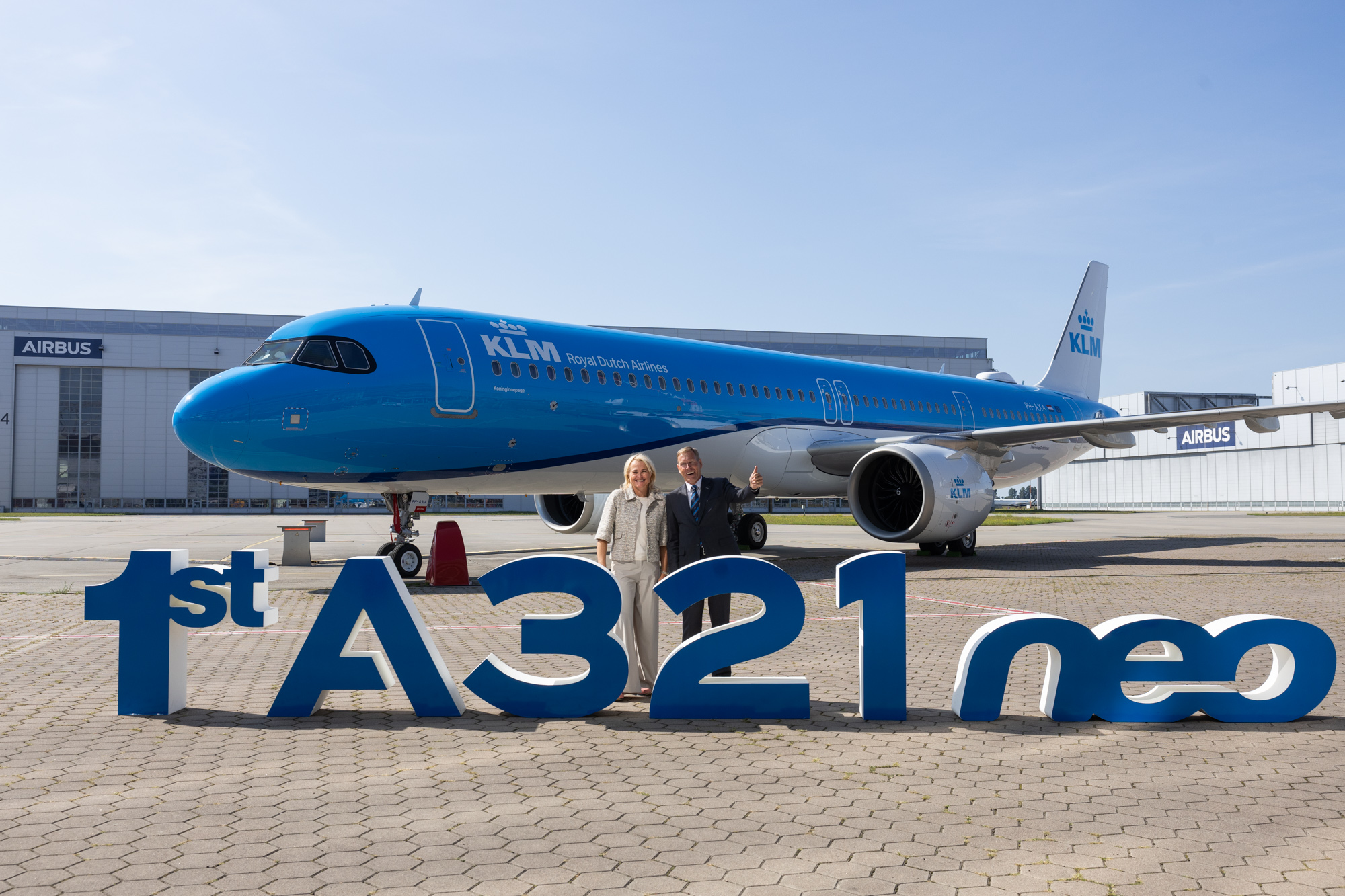(Posted 28th August 2024)

Photo caption: The first A321neo for KLM was handed over at Airbus’ Hamburg manufacturing site by Wouter van Wersch, Airbus Executive Vice President International, to Marjan Rintel, President & CEO KLM.
Dutch national carrier KLM, member of the Air France-KLM Group, has taken delivery of its first A321neo as part of their fleet modernisation with latest generation, fuel-efficient aircraft. With the aircraft KLM joins the community of successful A321neo operators.
Previously did KLM not use the single aisle Airbus family aircraft for their short and meidum haul services and the switch from another manufacturer to Airbus was well noted amongst the aviation fraternity.
By selecting the A321neo, KLM brings on-board the latest technology to lower decibels and to reduce the noise footprint during take-off, approach and landing. Together with its advanced fuel efficiency, the A321neo will play a key role in KLM’s environmental ambition.
The newly delivered A321neo for KLM seats 227 passengers in a two-class layout. The cabin features Airbus’ Airspace cabin with XL bins. The larger bins provide 60% more luggage capacity for a more relaxed boarding experience for passengers and cabin crew. In addition, USB-C ports are available for passengers at every seat, and the latest lighting system enhances the overall passenger experience.
The A321neo is the largest member of Airbus’ best-selling A320neo Family, offering unparalleled range and performance. Equipped with sharklets and powered by new generation CFM International LEAP-1A engines, the A321neo brings a 50% noise footprint reduction and at least 20% fuel savings and CO? reduction compared to previous generation single-aisle aircraft, while maximising passenger comfort in the widest single-aisle cabin in the sky. To date, more than 6,400 A321neo aircraft have been ordered by more than 90 customers across the globe.
As with all Airbus aircraft, the A321neo aircraft is already able to operate with up to 50% Sustainable Aviation Fuel (SAF). Airbus is targeting to have its aircraft up to 100% SAF capable by 2030.






